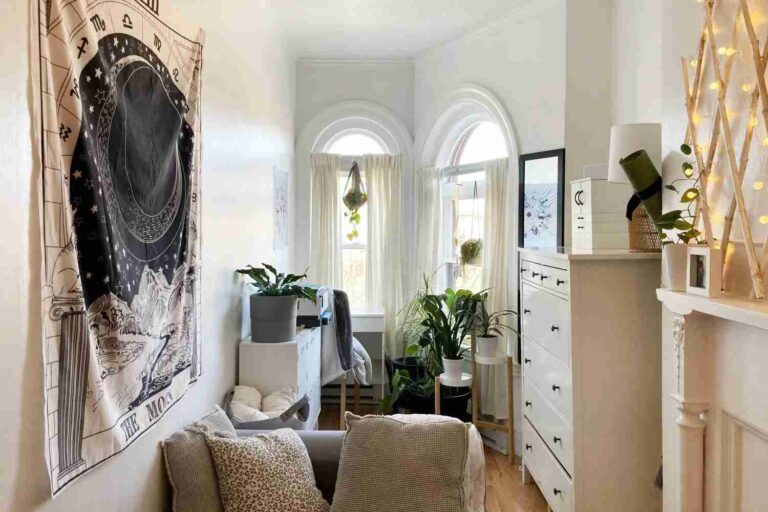Designer Tricks for Small Apartment Acoustics
Small apartments have a charm all their own — every inch counts, every detail matters. But when it comes to sound, tight spaces bring big challenges.
In cities, walls are thin, floors are hard, and echoes have nowhere to hide. You don’t need a huge home to enjoy peace and quiet; you just need a smarter approach to acoustic design.
Sound control in compact spaces is all about balance.
Hard surfaces like concrete, tile, and glass bounce sound around, creating a hollow, restless atmosphere.
That echo makes music harsh and conversations tiring. The good news? You can fix it without sacrificing light or space.
Adding white acoustic wall panels is one of the easiest ways to calm the noise.
They absorb sound, brighten your walls, and blend into any décor — the perfect trick for apartments where every square foot needs to look and feel open.
Why Small Spaces Get So Loud
Small spaces seem like they should be quieter, but the opposite is usually true.
When there’s less room for sound to travel, it bounces faster and stronger.
Add hard flooring and bare walls, and you get a mini echo chamber.
Hard materials — stone, laminate, glass — all reflect sound waves.
The more surfaces you have like these, the louder small noises become.
A dropped key, footsteps, or even light conversation can seem amplified.
Minimalist furniture doesn’t help either.
The fewer soft surfaces you have, the less sound absorption happens naturally.
Add thin walls and you’ll hear not only your own space but sometimes your neighbors’ too.
All that sound has nowhere to escape, and the result is a room that feels busy, even when it’s empty.
That’s why smart design choices matter.
The goal isn’t to add clutter but to use materials that quietly work for you — fabrics, rugs, curtains, and panels that soften your surroundings while keeping your aesthetic clean.
Where to Place Panels for Best Results
You don’t need to cover every wall to make your apartment sound better. In small spaces, the smartest solutions are usually the simplest ones.
Think of acoustic panels as part of your décor — a few well-placed pieces can make the whole room feel calmer and more polished.
Focus on the areas where sound naturally bounces or where you spend most of your time.
Focus on These Key Spots
Start with the largest blank wall in your apartment.
That’s usually the one behind your couch or bed.
These flat, open surfaces reflect sound more than anything else.
Hanging a few panels there will make an immediate difference — the echo softens, voices sound clearer, and the whole space feels more grounded.
Another great spot is above your desk or dining table.
These are areas where you talk, focus, or entertain guests, so clean, balanced sound matters.
You’ll notice right away that conversations feel easier and background noise less intrusive.
If you want your panels to do double duty, use them to create an accent wall.
Arrange them in a geometric pattern or mix square and rectangular shapes for a modern, sculptural look.
In bright white, they’ll bounce light around and make your space feel even more open — practical and stylish all at once.
Smart Placement Tips
Placement is where the magic happens.
Where you hang your panels can completely change how your room looks and sounds.
Try mounting them a little higher on the wall — it draws the eye upward, giving the illusion of taller ceilings, and it helps absorb sound that travels between the floor and ceiling.
Don’t forget the corners.
Sound often builds up there, especially the lower frequencies that make a room feel heavy or echoey.
Placing a few panels diagonally or stacking them vertically in the corners can calm those echoes quickly.
And above all, think of your panels as design elements, not just tools for soundproofing.
They don’t have to look technical. Mix them in with framed art, floating shelves, or light fixtures so they feel like part of the room’s personality.
A soft white panel layout blends into most interiors effortlessly, while a neat grid can add a touch of modern architecture.
The best acoustic design doesn’t call attention to itself — it simply makes your home feel more comfortable, balanced, and quietly beautiful.
Making Panels Look Intentional
Acoustic design doesn’t have to be hidden or purely functional.
When done with care, it can look beautiful — like part of your home’s personality.
The goal isn’t to disguise the panels but to let them blend naturally into your décor, becoming a quiet layer of texture that adds warmth and depth.
Good design always feels effortless, and acoustic panels can absolutely be part of that balance.
Style Integration Ideas
If your apartment has a modern or minimalist vibe, think clean and structured.
Arrange the panels in a grid pattern, evenly spaced, so they resemble abstract wall art.
The repetition feels intentional, not technical, and the result is crisp but soft at the same time.
For something cozier or more bohemian, loosen things up a little.
Offset your panels slightly or mix them with floating shelves and greenery.
Plants help soften straight lines and bring a natural rhythm to the space.
Hanging vines or leafy pots can turn a simple sound panel wall into a living, breathing composition.
You can also treat panels like a backdrop.
Place them behind your couch, TV, or bed to add a subtle dimension.
Their matte texture interacts with light beautifully, shifting tones as the day moves from morning to evening.
Against shiny surfaces — mirrors, ceramics, or metal accents — the contrast feels especially elegant.
It’s one of those small tricks designers use to make compact rooms feel more layered and inviting without adding clutter.
Renter-Friendly Installation
If you rent, improving your acoustics doesn’t have to mean damaging the walls or leaving marks behind.
Most modern panels are designed with flexibility in mind.
You can mount them with command strips or removable adhesive squares that hold firmly but come off clean when it’s time to move or redecorate.
No-drill options are perfect for small spaces where every inch of wall matters.
You can even create temporary setups — hang a few panels when you’re working from home or watching movies, then store them away when you want a more open look.
The process is quick, reversible, and stress-free.
That’s the beauty of acoustic panels today: they adapt to your lifestyle.
They make your home sound better, look better, and feel more intentional — all without demanding permanent changes. It’s designed to fit real life, not the other way around.
Getting the Most Bang for Your Buck
When you’re designing a small apartment, budget and space often compete for attention.
The key is to do more with less.
Start with one problem wall — usually the one that faces your main seating area or workspace. Covering just 25–30% of that surface makes a noticeable difference in how your space sounds.
Add a rug, some curtains, and soft furniture, and you’ve already transformed the atmosphere without losing your clean aesthetic.
Choose panels that last and fit your décor long-term.
White or neutral colors are timeless, and their reflective quality helps keep small rooms bright.
You’ll get a double win — better acoustics and a design upgrade that looks effortless.
Good acoustic design in a small apartment isn’t about adding more stuff. It’s about choosing smarter pieces that serve multiple purposes.
When design and function work together, even the tiniest home can feel calm, spacious, and balanced.
With a few thoughtful changes, your space can sound just as beautiful as it looks.



